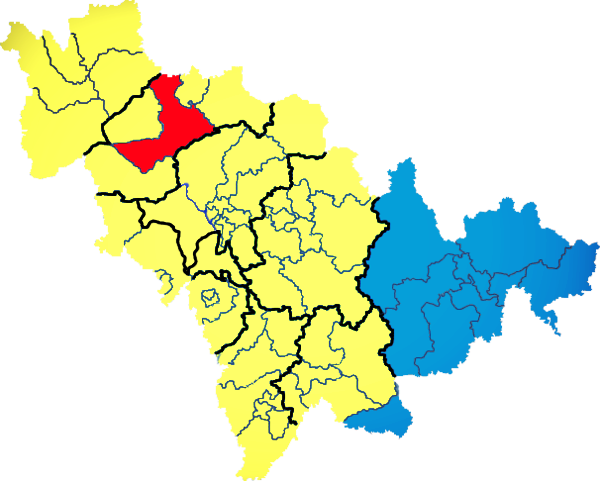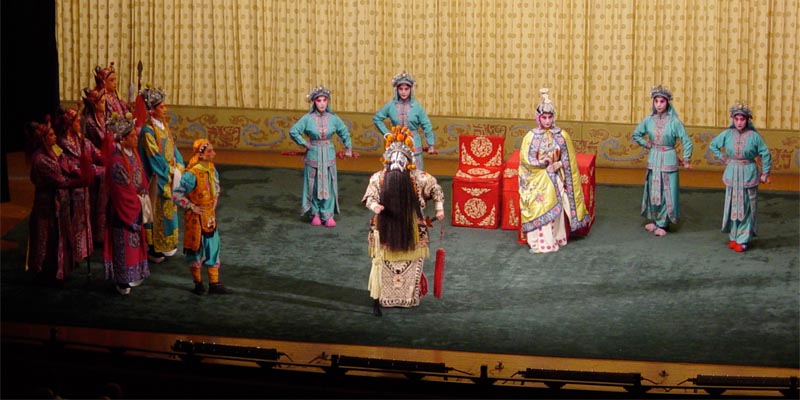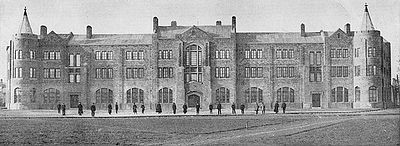|
Jilin Opera
Jilin opera (, Pinyin: Jiju) is a form of Chinese opera, especially popular in Jilin province, China. Compared to Kun opera or Beijing opera, it is played in modern Mandarin, similar to Pingju opera. Jilin opera came into Beijing in the second half of the 20th century, during the Hundred Flowers Campaign. The Jilin Opera Troupe was established in 1960 in Changchun Changchun is the capital and largest city of Jilin, Jilin Province, China, on the Songliao Plain. Changchun is administered as a , comprising seven districts, one county and three county-level cities. At the 2020 census of China, Changchun ha ..., the capital city of Jilin province. There is also the Jilin Opera House (). References External links Jilin opera: Peach, Pear and Plum (Video)(in Chinese) {{Chinese opera Chinese opera Theatrical genres ... [...More Info...] [...Related Items...] OR: [Wikipedia] [Google] [Baidu] |
Chinese Opera
Traditional Chinese opera (), or ''Xiqu'', is a form of musical theatre in China with roots going back to the early periods in China. It is an amalgamation of various art forms that existed in ancient China, and evolved gradually over more than a thousand years, reaching its mature form in the 13th century, during the Song dynasty (960–1279 AD). Early forms of Chinese theater are simple; however, over time, various art forms such as music, song and dance, martial arts, acrobatics, costume and make-up art, as well as literary art forms were incorporated to form traditional Chinese opera. Performers had to practice for many years to gain an understanding of the roles. Exaggerated features and colors made it easier for the audience to identify the roles portrayed by the performers. There are over a hundred regional branches of traditional Chinese opera today. In the 20th century, the Peking opera emerged in popularity and has come to be known as the "national theatre" of China ... [...More Info...] [...Related Items...] OR: [Wikipedia] [Google] [Baidu] |
Jilin Province
) , image_skyline = Changbaishan Tianchi from western rim.jpg , image_alt = , image_caption = View of Heaven Lake , image_map = Jilin in China (+all claims hatched).svg , mapsize = 275px , map_alt = Map showing the location of Jilin Province , map_caption = Map showing the location of Jilin Province , coordinates = , subdivision_type = Country , subdivision_name = China , named_for = from ''girin ula'', a Manchu phrase meaning "along the river" , seat_type = Capital , seat = , seat1_type = , seat1 = , parts_type = Divisions , parts_style = para , p1 = 9 prefectures , p2 = 60 counties , p3 = 1006 townships , government_type = Province , governing_body = Jilin Provincial People's Congress , leader_title = Party Secretary , leader_name = Huang Q ... [...More Info...] [...Related Items...] OR: [Wikipedia] [Google] [Baidu] |
China
China, officially the People's Republic of China (PRC), is a country in East Asia. With population of China, a population exceeding 1.4 billion, it is the list of countries by population (United Nations), second-most populous country after India, representing 17.4% of the world population. China spans the equivalent of five time zones and Borders of China, borders fourteen countries by land across an area of nearly , making it the list of countries and dependencies by area, third-largest country by land area. The country is divided into 33 Province-level divisions of China, province-level divisions: 22 provinces of China, provinces, 5 autonomous regions of China, autonomous regions, 4 direct-administered municipalities of China, municipalities, and 2 semi-autonomous special administrative regions. Beijing is the country's capital, while Shanghai is List of cities in China by population, its most populous city by urban area and largest financial center. Considered one of six ... [...More Info...] [...Related Items...] OR: [Wikipedia] [Google] [Baidu] |
Kun Opera
Kunqu (), also known as Kunju (), K'un-ch'ü, Kun opera or Kunqu Opera, is one of the oldest extant forms of Chinese opera. It evolved from a music style local to Kunshan, part of the Wu cultural area, and later came to dominate Chinese theater from the 16th to the 18th centuries. refined the musical style of kunqu, and it gained widespread popularity when Liang Chenyu used the style in his drama ''Huansha ji'' (''Washing Silken Gauze''). Well-known pieces of Kunqu opera included ''The Peony Pavilion'' from the Ming dynasty. The melody or tune of Kunqu is one of the Four Great Characteristic Melodies in Chinese opera. It is known for its elegant lyrics, graceful style and delicate performance. It is one of the operas grouped under Southern Opera, and it is known as the "ancestor of a hundred operas." Kunqu uses drum and board to provide rhythm to the tunes, with flute, sanxian and so on as the main accompanying instrument. The opera is sung in " Zhongzhou rhyme". In 2001 ... [...More Info...] [...Related Items...] OR: [Wikipedia] [Google] [Baidu] |
Beijing Opera
Peking opera, or Beijing opera (), is the most dominant form of Chinese opera, which combines instrumental music, vocal performance, mime, martial arts, dance and acrobatics. It arose in Beijing in the mid-Qing dynasty (1644–1912) and became fully developed and recognized by the mid-19th century. The form was extremely popular in the Qing court and has come to be regarded as one of the cultural treasures of China. Major performance troupes are based in Beijing, Tianjin and Shanghai. The art form is also preserved in Taiwan, where it is also known as (). It has also spread to other regions such as the United States and Japan. Peking opera features four main role types, '' sheng'' (gentlemen), '' dan'' (women), '' jing'' (rough men), and '' chou'' (clowns). Performing troupes often have several of each variety, as well as numerous secondary and tertiary performers. With their elaborate and colorful costumes, performers are the only focal points on Peking opera characteristicall ... [...More Info...] [...Related Items...] OR: [Wikipedia] [Google] [Baidu] |
Mandarin Chinese
Mandarin ( ; zh, s=, t=, p=Guānhuà, l=Mandarin (bureaucrat), officials' speech) is the largest branch of the Sinitic languages. Mandarin varieties are spoken by 70 percent of all Chinese speakers over a large geographical area that stretches from Yunnan in the southwest to Xinjiang in the northwest and Heilongjiang in the northeast. Its spread is generally attributed to the greater ease of travel and communication in the North China Plain compared to the more mountainous south, combined with the relatively recent spread of Mandarin to frontier areas. Many varieties of Mandarin, such as Southwestern Mandarin, those of the Southwest (including Sichuanese dialects, Sichuanese) and the Lower Yangtze Mandarin, Lower Yangtze, are not mutually intelligible with the Beijing dialect (or are only partially intelligible). Nevertheless, Mandarin as a group is often placed first in lists of languages by number of native speakers (with nearly one billion). Because Mandarin originated in ... [...More Info...] [...Related Items...] OR: [Wikipedia] [Google] [Baidu] |
Pingju
Pingju or Ping opera () is a form of Chinese opera from North China, northern China. History Pingju originated in Tangshan, Hebei, near the city of Tianjin.. Among all China's regional operas, it was the most famous in the Republic of China (1912–49), Republican period for its passionate performances and romantic plots. Movies based upon and incorporating Pingju include Zhang Shichuan's 1936 ''Red Begonia'' ''Hǎitáng Hóng''), starring Bai Yushuang. Performers Bai Yushuang was known as the "Queen of Pingju". Other famed performers include Xin Fengxia and her mentor Hua Furong. References Bibliography * Further reading * Chinese opera Culture in Hebei Tangshan {{China-stub ... [...More Info...] [...Related Items...] OR: [Wikipedia] [Google] [Baidu] |
Hundred Flowers Campaign
The Hundred Flowers Campaign, also termed the Hundred Flowers Movement ( zh, s=百花齐放, p=Bǎihuā Qífàng) and the Double Hundred Movement ( zh, labels=no, s=双百方针, p=Shuāngbǎi Fāngzhēn), was a period from 1956 to 1957 in the People's Republic of China during which the Chinese Communist Party (CCP), led by Mao Zedong, proposed to "let one hundred flowers bloom in social science and arts and let one hundred points of view be expressed in the field of science." It was a campaign that allowed citizens to offer criticism and advice to the government and the party; hence it was intended to serve an antibureaucratic purpose, at least on the Maoists' part. The campaign resulted in a groundswell of criticism aimed at the Party and its policies by those outside its rank and represented a brief period of relaxation in ideological and cultural control. The movement was in part a response to tensions between the CCP and Chinese intellectuals. Mao had realized that the CCP ... [...More Info...] [...Related Items...] OR: [Wikipedia] [Google] [Baidu] |
Changchun
Changchun is the capital and largest city of Jilin, Jilin Province, China, on the Songliao Plain. Changchun is administered as a , comprising seven districts, one county and three county-level cities. At the 2020 census of China, Changchun had a population of 9,066,906; its metro area, comprising five districts and one development area, had a population of 5,019,477. Shuangyang and Jiutai districts are not urbanized yet. It is one of the biggest cities in Northeast China, along with Shenyang, Dalian and Harbin. The name of the city means "long spring" in Chinese language, Chinese. Between 1932 and 1945, Changchun was renamed Xinjing ( zh, c=新京 , p=Xīnjīng, l=new capital) or Hsinking by the Kwantung Army as the capital of the Imperial Japanese puppet state of Manchukuo, occupying modern Northeast China. After the Proclamation of the founding of the People's Republic of China, foundation of the People's Republic of China in 1949, Changchun was established as the provincial ... [...More Info...] [...Related Items...] OR: [Wikipedia] [Google] [Baidu] |







